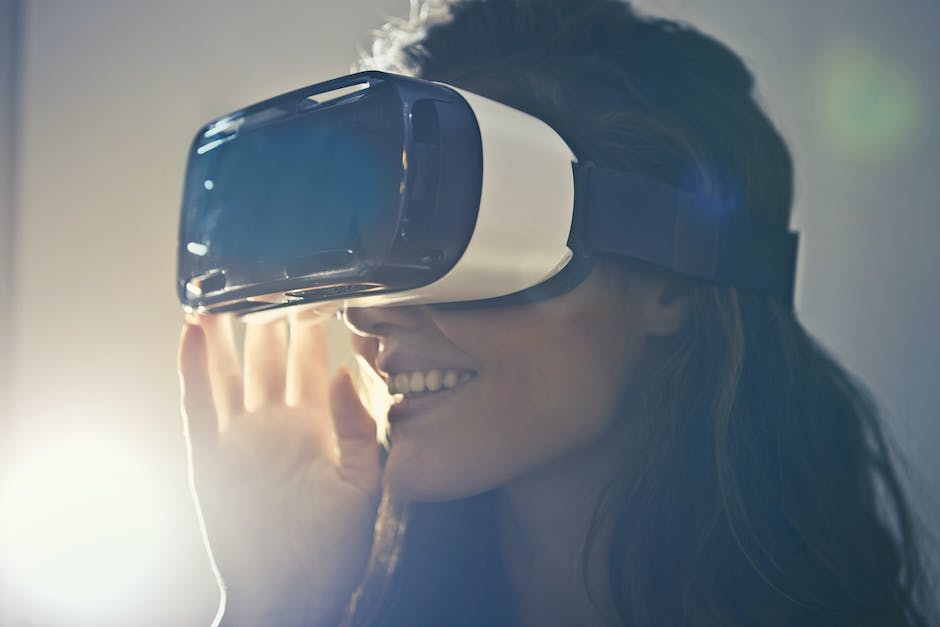Table of Contents
- Introduction
- Enhancing Learning Experiences: How Virtual Reality is Revolutionizing Education
- The Benefits of Virtual Reality in Classroom Settings: A Promising Future for Education
- Exploring the Potential of Virtual Reality in STEM Education: Advancements and Opportunities
- Virtual Reality in Higher Education: Bridging the Gap between Theory and Practice
- Q&A
- Conclusion
“Unlocking limitless learning through immersive experiences.”
Introduction
Virtual Reality (VR) has emerged as a promising technology with the potential to revolutionize various industries, including education. By creating immersive and interactive experiences, VR offers unique opportunities to enhance learning and engage students in ways that traditional methods cannot. This introduction will explore the prospects of virtual reality in education, highlighting its benefits and potential applications in classrooms and beyond.
Enhancing Learning Experiences: How Virtual Reality is Revolutionizing Education

Virtual reality (VR) has emerged as a groundbreaking technology that has the potential to revolutionize education. By creating immersive and interactive experiences, VR has the power to enhance learning in ways that were previously unimaginable. This article explores the prospects of virtual reality in education and how it is transforming the way students learn.
One of the key advantages of VR in education is its ability to provide students with a hands-on and experiential learning experience. Traditional teaching methods often rely on textbooks and lectures, which can be passive and detached from real-world applications. With VR, students can step into virtual environments and actively engage with the subject matter. For example, medical students can practice surgical procedures in a virtual operating room, allowing them to gain practical skills in a safe and controlled environment.
Furthermore, VR can bridge the gap between theory and practice by simulating real-world scenarios. For instance, history students can virtually visit ancient civilizations and witness historical events unfold before their eyes. This immersive experience not only makes learning more engaging but also helps students develop a deeper understanding and appreciation for the subject matter.
Another advantage of VR in education is its ability to cater to different learning styles. Every student has a unique way of processing information, and traditional teaching methods may not effectively accommodate all learning styles. VR, on the other hand, can provide a personalized learning experience by adapting to individual needs. For example, visual learners can benefit from the visual and spatial representations in VR, while kinesthetic learners can engage in hands-on activities within the virtual environment.
Moreover, VR can foster collaboration and communication among students. In a traditional classroom setting, students often work individually or in small groups. However, VR can enable students from different locations to collaborate in a shared virtual space. This not only promotes teamwork but also exposes students to diverse perspectives and ideas. For example, students from different countries can collaborate on a virtual science experiment, exchanging knowledge and cultural insights.
Additionally, VR can make learning more accessible and inclusive. Students with physical disabilities or those who are unable to attend school due to various reasons can still participate in virtual classrooms. This ensures that no student is left behind and that education is accessible to all. Furthermore, VR can provide a safe and supportive environment for students with social anxiety or learning difficulties, allowing them to learn at their own pace without fear of judgment or failure.
Despite the numerous benefits, there are also challenges that need to be addressed for the widespread adoption of VR in education. Cost is one of the major barriers, as VR equipment and software can be expensive. Additionally, there is a need for comprehensive training and support for teachers to effectively integrate VR into their curriculum. Furthermore, ethical considerations such as data privacy and the potential for addiction need to be carefully addressed.
In conclusion, virtual reality holds immense potential in revolutionizing education. By providing immersive and interactive learning experiences, VR can enhance student engagement, cater to different learning styles, foster collaboration, and make education more accessible and inclusive. However, challenges such as cost and training need to be overcome for the widespread adoption of VR in education. With continued research and development, virtual reality has the power to transform the way we teach and learn, opening up new possibilities for the future of education.
The Benefits of Virtual Reality in Classroom Settings: A Promising Future for Education
Virtual reality (VR) has emerged as a promising tool in the field of education, offering a wide range of benefits for both students and teachers. With its immersive and interactive nature, VR has the potential to revolutionize the way students learn and engage with educational content. This article explores the various benefits of using virtual reality in classroom settings and highlights the promising future it holds for education.
One of the key advantages of VR in education is its ability to create a highly engaging and immersive learning environment. By transporting students to virtual worlds, VR allows them to experience and interact with concepts that would otherwise be difficult or impossible to visualize. For example, students can explore historical landmarks, dive into the depths of the ocean, or even travel to outer space, all from the comfort of their classroom. This level of immersion not only captivates students’ attention but also enhances their understanding and retention of the subject matter.
Furthermore, VR provides a unique opportunity for students to actively participate in their learning. Unlike traditional teaching methods that rely on passive consumption of information, VR encourages students to become active learners by allowing them to manipulate objects, solve problems, and make decisions within the virtual environment. This hands-on approach fosters critical thinking, problem-solving skills, and creativity, as students are required to actively engage with the content and apply their knowledge in practical scenarios.
In addition to engagement and active learning, VR also promotes inclusivity and accessibility in education. Students with different learning styles or physical disabilities can benefit greatly from the immersive and interactive nature of VR. For instance, visual learners can better grasp complex concepts through visualizations, while kinesthetic learners can physically interact with objects in the virtual environment. Moreover, students with physical disabilities can overcome physical limitations and participate in activities that would otherwise be challenging or impossible for them. By leveling the playing field, VR ensures that all students have equal opportunities to learn and succeed.
Another advantage of VR in education is its potential to enhance collaboration and communication among students. Virtual reality platforms often include features that allow students to interact with each other, work together on projects, and engage in discussions. This collaborative aspect not only promotes teamwork and communication skills but also encourages students to learn from each other and share their knowledge and perspectives. By breaking down geographical barriers, VR enables students from different parts of the world to connect and collaborate, fostering a global learning community.
Furthermore, VR can be a cost-effective solution for schools and educational institutions. While traditional field trips or hands-on experiments can be expensive and logistically challenging, VR offers a more affordable and scalable alternative. With the right equipment and software, schools can provide students with virtual experiences that mimic real-world scenarios at a fraction of the cost. This opens up new possibilities for schools with limited resources to offer high-quality educational experiences that were previously out of reach.
In conclusion, virtual reality holds immense potential in transforming education. Its ability to create immersive and interactive learning environments, promote active learning, foster inclusivity, enhance collaboration, and provide cost-effective solutions make it a promising tool for classrooms of the future. As technology continues to advance, it is crucial for educators and policymakers to embrace and integrate VR into the education system, ensuring that students are equipped with the skills and knowledge needed to thrive in the digital age.
Exploring the Potential of Virtual Reality in STEM Education: Advancements and Opportunities
Virtual reality (VR) has emerged as a groundbreaking technology with the potential to revolutionize various industries, including education. In particular, the field of STEM education stands to benefit greatly from the integration of virtual reality. This article will explore the advancements and opportunities that virtual reality presents in the realm of STEM education.
One of the key advantages of virtual reality in STEM education is its ability to provide immersive and interactive learning experiences. Traditional classroom settings often struggle to engage students and make abstract concepts tangible. However, virtual reality can transport students to different environments, allowing them to explore and interact with complex scientific phenomena in a way that textbooks and lectures cannot replicate.
For instance, in the field of biology, virtual reality can enable students to explore the inner workings of cells or witness the intricacies of the human body. By donning a VR headset, students can navigate through a virtual environment, observing and manipulating biological structures in real-time. This hands-on approach not only enhances understanding but also fosters a sense of curiosity and excitement among students.
Similarly, in physics and engineering, virtual reality can simulate real-world scenarios that are otherwise difficult to recreate in a classroom. Students can experiment with different variables and observe the consequences of their actions, helping them develop a deeper understanding of fundamental principles. Whether it’s designing and testing bridges or exploring the laws of motion, virtual reality provides a safe and controlled environment for students to learn and experiment.
Furthermore, virtual reality can bridge the gap between theory and practice by offering practical training opportunities. In fields such as medicine and engineering, where hands-on experience is crucial, virtual reality can provide a simulated environment for students to practice their skills. Surgeons can perform virtual surgeries, engineers can design and test prototypes, and pilots can practice flying in a virtual cockpit. This not only enhances technical proficiency but also instills confidence in students before they enter real-world scenarios.
Another advantage of virtual reality in STEM education is its potential for inclusivity and accessibility. Traditional laboratory experiments and field trips may be limited by factors such as cost, safety concerns, or geographical constraints. However, virtual reality can overcome these barriers by bringing the laboratory or field trip to the students. Students from remote areas or underprivileged backgrounds can have the same educational opportunities as their peers, leveling the playing field and promoting equity in education.
Moreover, virtual reality can foster collaboration and teamwork among students. By connecting multiple VR headsets, students can work together in a shared virtual environment, solving problems and conducting experiments collaboratively. This not only enhances critical thinking and communication skills but also prepares students for the collaborative nature of STEM careers.
In conclusion, virtual reality holds immense potential in transforming STEM education. Its ability to provide immersive and interactive learning experiences, practical training opportunities, inclusivity, and collaboration make it a powerful tool for educators. As technology continues to advance, virtual reality is poised to become an integral part of the classroom, revolutionizing the way students learn and engage with STEM subjects. By embracing virtual reality, educators can unlock a world of possibilities and prepare students for the challenges and opportunities of the future.
Virtual Reality in Higher Education: Bridging the Gap between Theory and Practice
Virtual Reality (VR) has emerged as a promising technology with the potential to revolutionize various industries, including education. In particular, VR has the potential to bridge the gap between theory and practice in higher education, offering students immersive and interactive learning experiences that were previously unimaginable.
One of the key advantages of VR in higher education is its ability to provide students with hands-on experience in a safe and controlled environment. For example, in medical education, VR can simulate surgical procedures, allowing students to practice and refine their skills without the risk of harming real patients. This not only enhances their learning but also boosts their confidence when they eventually enter the real world.
Furthermore, VR can also facilitate collaborative learning experiences. Through virtual environments, students can interact with their peers and instructors, regardless of their physical location. This opens up opportunities for global collaboration, where students from different parts of the world can work together on projects, share ideas, and learn from each other’s perspectives. Such collaborative learning experiences not only enhance students’ understanding of the subject matter but also foster important skills such as teamwork and communication.
In addition to practical skills, VR can also be used to teach abstract concepts that are difficult to visualize. For instance, in physics or chemistry classes, VR can create visual representations of complex theories, making them more accessible and engaging for students. By immersing students in these virtual environments, VR can help them grasp abstract concepts more effectively, leading to a deeper understanding of the subject matter.
Moreover, VR can also cater to different learning styles and preferences. Traditional classroom settings often rely heavily on lectures and textbooks, which may not resonate with all students. However, with VR, students can learn through interactive simulations, games, and virtual field trips, catering to their individual learning styles. This personalized approach to education can significantly improve student engagement and motivation, ultimately leading to better learning outcomes.
Another advantage of VR in higher education is its potential to reduce costs. Field trips, for example, can be expensive and logistically challenging to organize. However, with VR, students can virtually visit historical sites, museums, or even outer space, without leaving the classroom. This not only saves costs but also allows students to explore places that may otherwise be inaccessible due to distance or safety concerns.
Despite the numerous benefits, it is important to acknowledge the challenges that come with implementing VR in higher education. The initial cost of VR equipment and software can be a barrier for many institutions. Additionally, there is a need for trained instructors who can effectively integrate VR into their teaching methods. However, as the technology continues to advance and become more affordable, these challenges are likely to diminish over time.
In conclusion, virtual reality holds great promise for higher education, particularly in bridging the gap between theory and practice. By providing hands-on experience, facilitating collaboration, enhancing visualization of abstract concepts, catering to different learning styles, and reducing costs, VR has the potential to revolutionize the way students learn and engage with educational content. As the technology continues to evolve, it is crucial for institutions to embrace and explore the possibilities of VR in order to prepare students for the challenges and opportunities of the future.
Q&A
1. What are the potential benefits of virtual reality in education?
Virtual reality in education can enhance student engagement, provide immersive learning experiences, facilitate interactive simulations, and enable remote collaboration.
2. How can virtual reality improve learning outcomes?
Virtual reality can improve learning outcomes by promoting active learning, enhancing retention and recall of information, fostering critical thinking and problem-solving skills, and accommodating different learning styles.
3. What subjects or areas of education can benefit from virtual reality?
Virtual reality can benefit various subjects and areas of education, including science, technology, engineering, and mathematics (STEM), history, geography, art, medicine, and vocational training.
4. Are there any challenges or limitations to implementing virtual reality in education?
Challenges and limitations of implementing virtual reality in education include cost and accessibility barriers, technical requirements, limited content availability, potential health and safety concerns, and the need for teacher training and support.
Conclusion
In conclusion, the prospects of virtual reality in education are promising. Virtual reality has the potential to enhance learning experiences by providing immersive and interactive environments. It can engage students in a more meaningful way, promote active learning, and improve retention of information. Additionally, virtual reality can offer opportunities for virtual field trips, simulations, and collaborative learning experiences. While there are still challenges to overcome, such as cost and accessibility, the benefits of virtual reality in education make it a technology worth exploring and integrating into educational settings.




